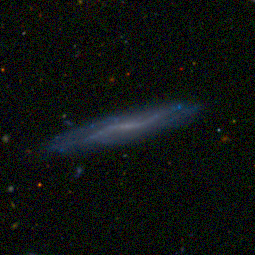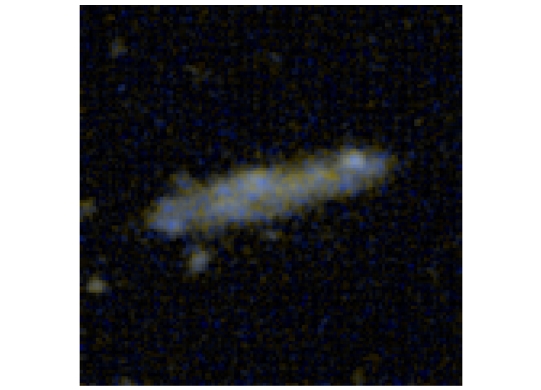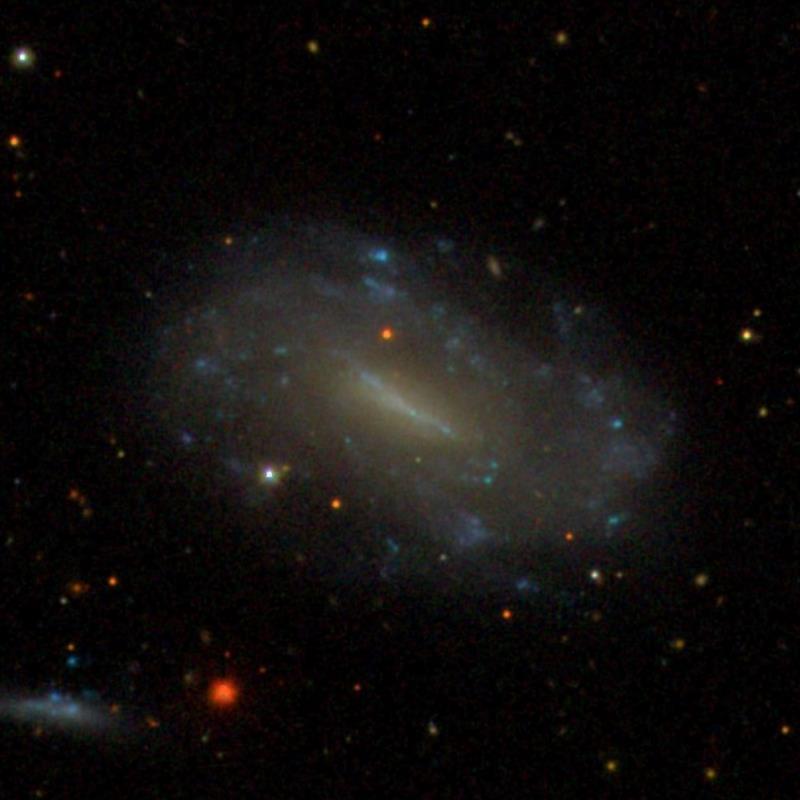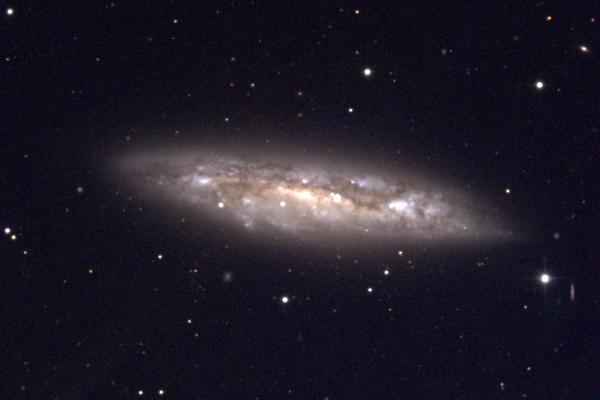Avalon wrote: ↑Sat Aug 12, 2023 2:51 am
My eye was drawn to the bright, little gem of a galaxy at the lower left corner. I'd love to see sharper images of that one, if we could only get closer.
Yes, mine too. The galaxy in question is IC 4263. I googled it, but I could find no sharp pictures of it. These two pictures are, unfortunately, the best I could find:
So we have two SDSS images, one somewhat yellowish, the other blue. So what color is IC 4263 really? NASA's now-defunct ultraviolet telescope GALEX can help us:
I think the overall GALEX color of IC 4263 resembles that of the GALEX color of NGC 5705, Let's compare it with the SDSS picture of NGC 5705 while we are at it:
Let's get back to IC 4263. There is a
Wikipedia entry on it - in French! My French is somewhere between terrible and non-existent! Anyway, this is what I managed to figure out from the French info:
The distance to IC 4263 is 139 million light-years (give or take, I would say!). Its redshift apparently suggests a distance of 131 million light-years. Same difference!
Although, when I checked my software, the redshift of IC 4263 appears to be much the same as the redshift of M51 itself, whose distance is circa 30 million light-years... Really!!)
The Hubble type of IC 4363 is most likely either SB(s)d or SBcd. The capital B means that IC 4263 is barred, the (s) means that there is no ring, and the Sd or Scd means that IC 4263 is a spiral galaxy with loosely wound arms and a patchy, broken structure.
Once again, back to IC 4263. According to French Wikipedia, it is a low surface brightness galaxy. This could be true, in view of the fact that the center of the galaxy, while yellow, is not bright. The lack of a bright yellow center suggests not only that the galaxy has a low surface brightness, but also that it is fairly low in mass.
French Wikipedia also says that the V magnitude of IC 4263 is 14.5. This makes it six magnitudes fainter than M51, whose V magnitude (according to
English Wikipedia) is 8.4. The (uncertain) distance to M51 is either 23 or 31 million light-years, according to Wikipedia.
And I guess that is what I can say about IC 4263!
Ann
 Messier 51 in 255 Hours
Messier 51 in 255 Hours







